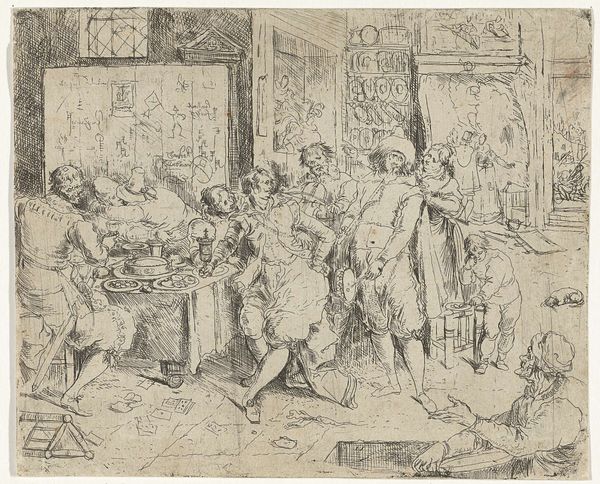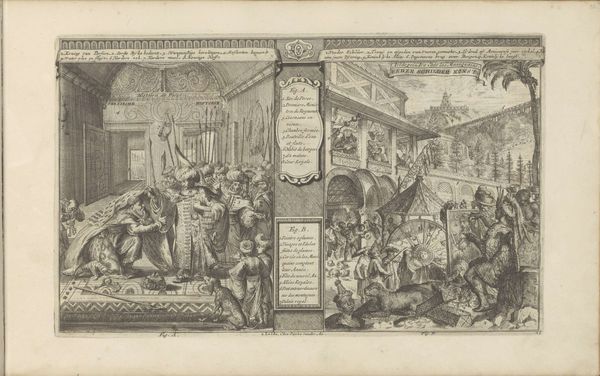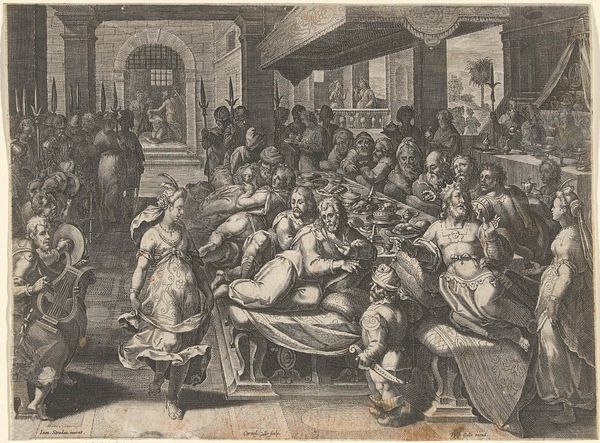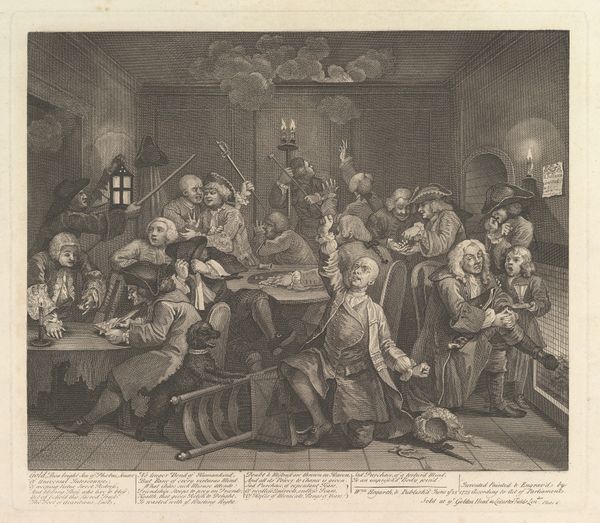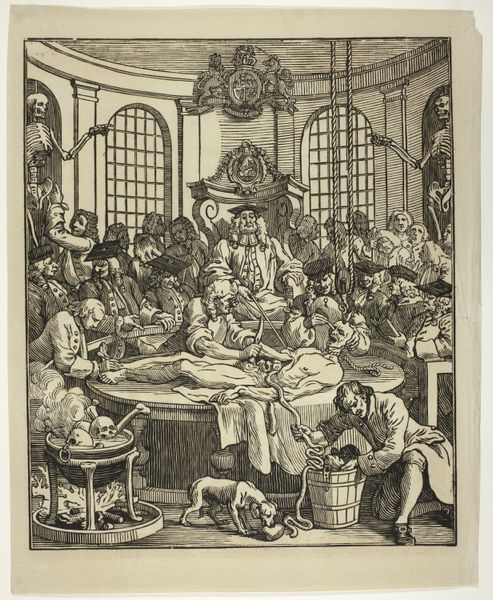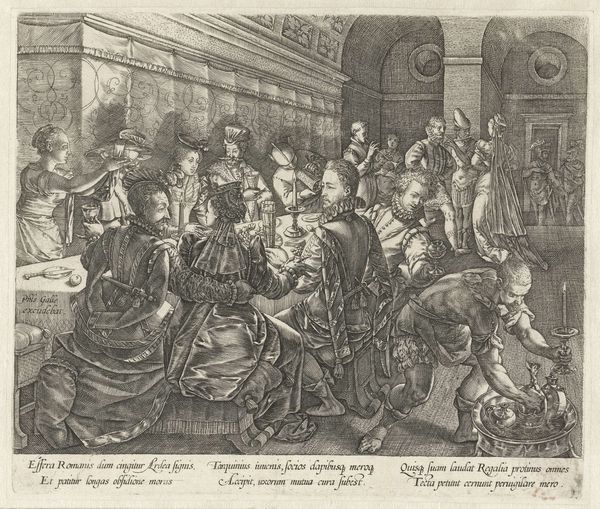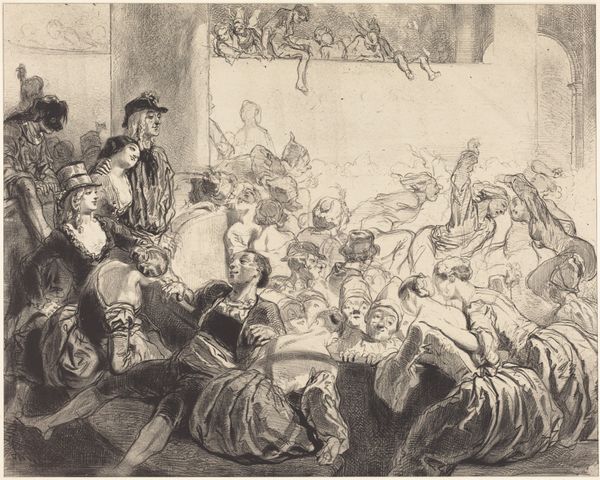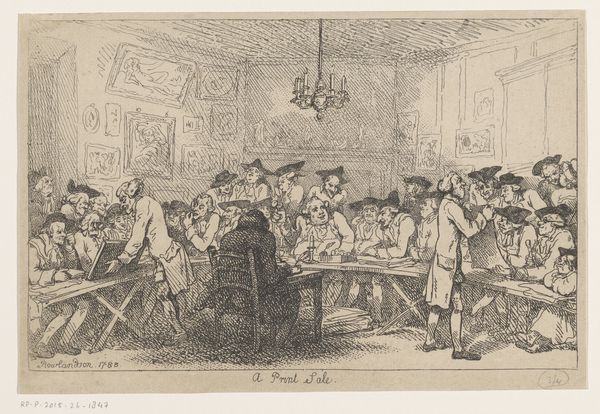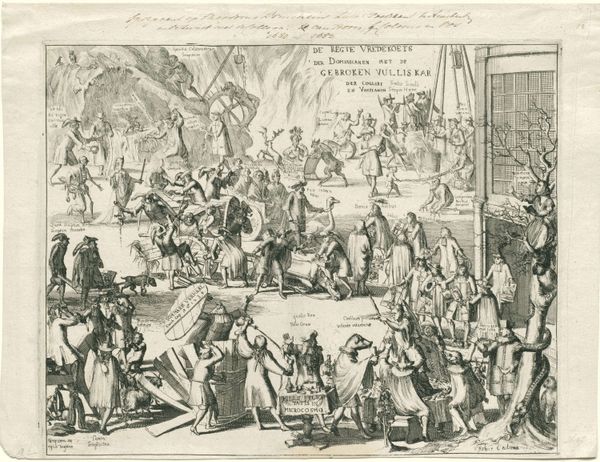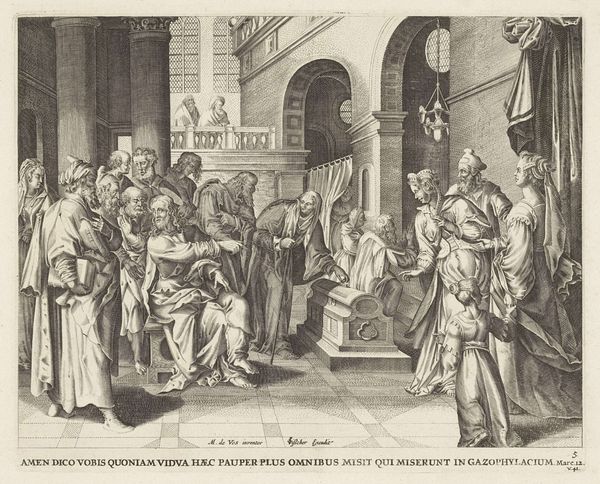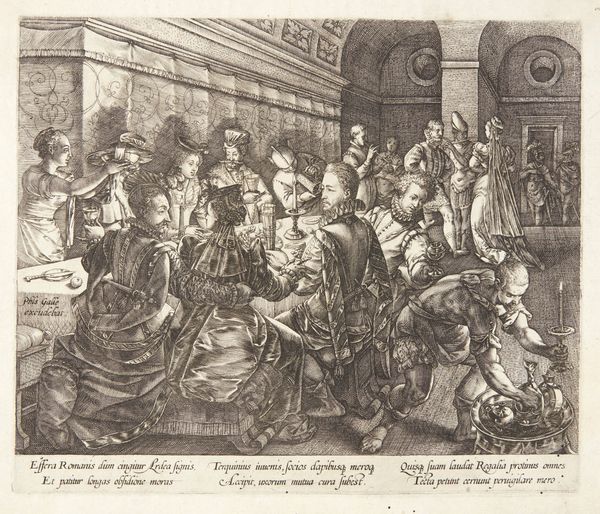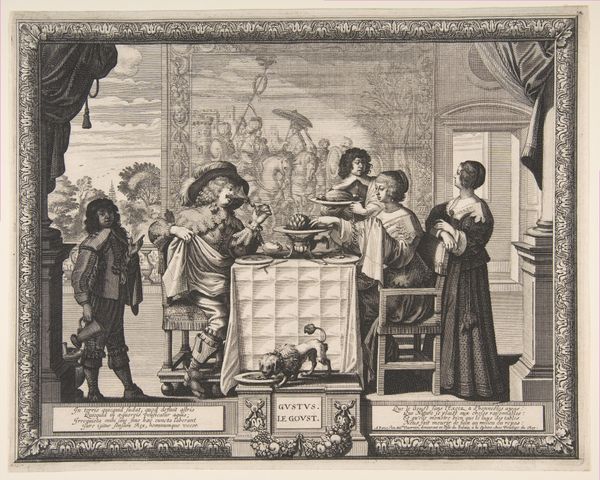
print, engraving
#
narrative-art
#
baroque
# print
#
figuration
#
history-painting
#
engraving
Dimensions: height 315 mm, width 395 mm
Copyright: Rijks Museum: Open Domain
Editor: Here we have "Roomse feestmaal, 1705," created sometime between 1689 and 1707, of which the author is unknown, housed at the Rijksmuseum. This baroque engraving shows what looks to be a very chaotic and rowdy scene. It's quite detailed, with a lot of figures and symbols. What are your thoughts when looking at this engraving? Curator: Let us first consider the arrangement. The artist establishes a clear foreground, middle ground, and background, creating depth within the relatively shallow space. Consider the use of line. Note how the varying thicknesses and densities of the lines define the forms and create areas of shadow and light. The composition leads your eye from the lower left inscription upward, inviting you to follow the gestures and gazes of the figures. What is the effect of this rising movement? Editor: It feels almost theatrical, like a stage performance where everything is exaggerated. What do you make of the table as a point of convergence in the image? Curator: Indeed. Observe how the table laden with food functions as a compositional anchor, drawing our focus to the center of the drama. Now, how does the distribution of dark and light contribute to the narrative? Where do you see the strongest contrasts, and how do they affect your reading of the scene? The contrast around the figure in the center certainly suggests they have significance. Editor: The darker areas seem to emphasize the debauchery. It’s also interesting how some figures are very active while others seem to be collapsing, contrasting within the same artwork. I hadn't thought so much about the use of light and dark to suggest the importance of certain parts of the composition. Curator: Precisely. Reflecting on the formal qualities such as line, light, and composition, we begin to understand how the artist conveyed narrative. Editor: Thanks, it really helps to analyze art with an eye to formal components rather than relying just on themes.
Comments
No comments
Be the first to comment and join the conversation on the ultimate creative platform.

